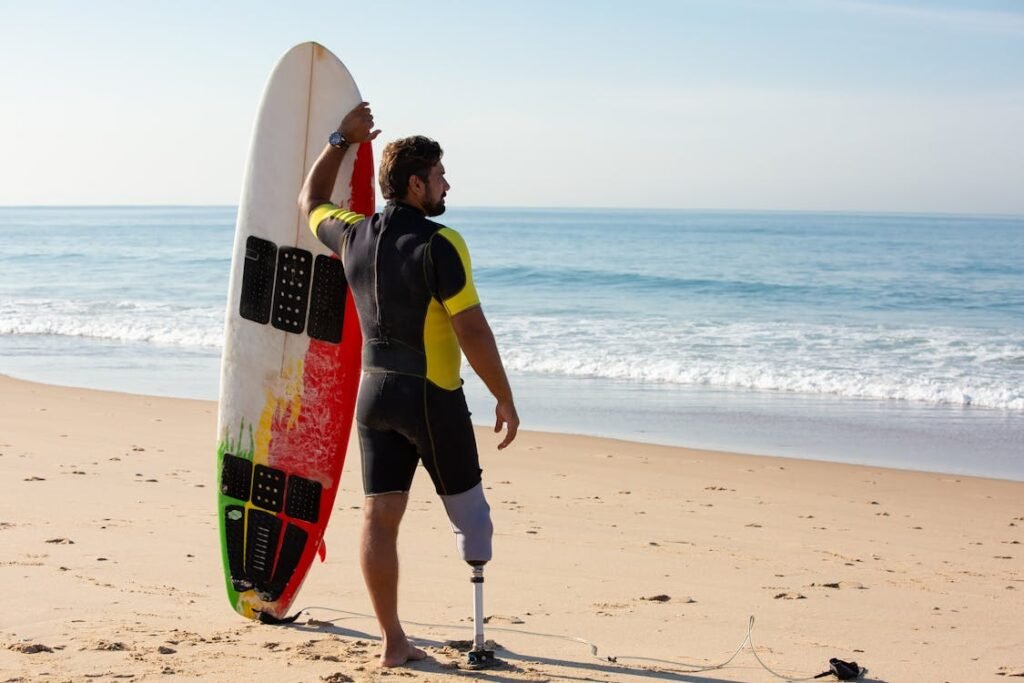When someone loses a limb, the first thing they often think about is getting a prosthetic that helps them walk again. But the real challenge isn’t just walking—it’s walking comfortably, safely, and confidently. And that comfort doesn’t start with the foot or the knee. It begins where the limb meets the socket.
For above-knee amputees in particular, the choice of socket design can make or break the entire prosthetic experience. Two of the most talked-about designs in the world of prosthetics are the Total Surface Bearing (TSB) socket and the Ischial Containment (IC) socket. These aren’t just technical terms—they represent very different philosophies on how the body should connect with the prosthesis.
At Robobionics, we’ve worked closely with patients across India and beyond to fit both of these socket types. We’ve seen how the right choice transforms mobility, and how the wrong one causes pain, frustration, and even emotional exhaustion. That’s why we believe it’s important to explain clearly—without jargon—what these sockets are, how they’re different, and what they mean for everyday life.
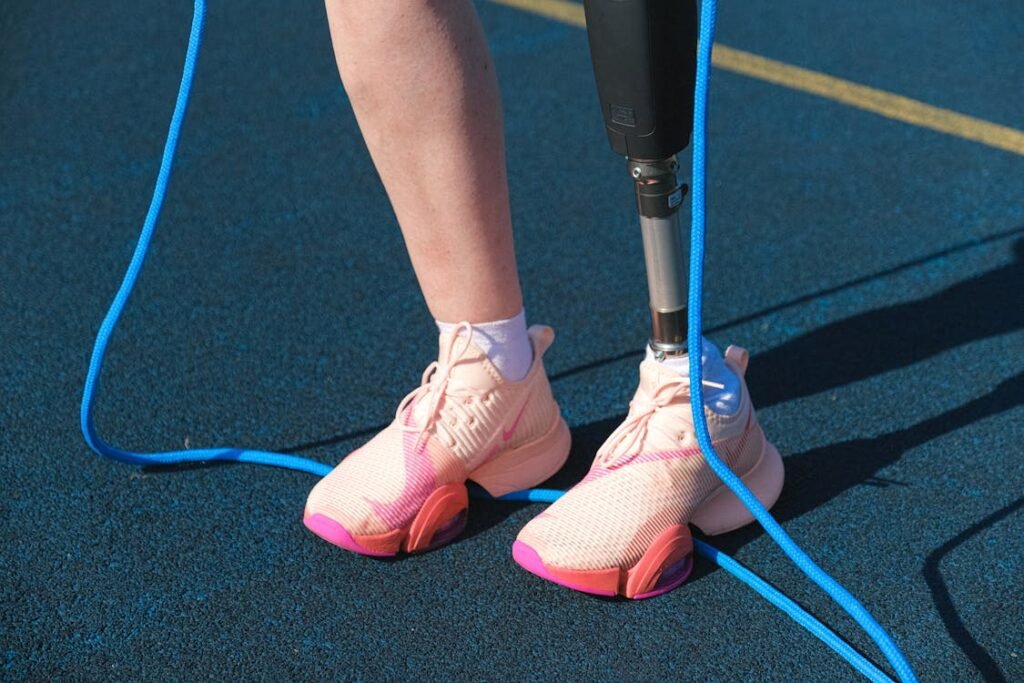
What Is a Total Surface Bearing Socket?
To understand the difference between these two socket types, we first need to explore what each one is designed to do. Let’s begin with the Total Surface Bearing (TSB) socket.
The name says a lot. “Total Surface Bearing” means the socket is designed to distribute pressure across the entire surface of the residual limb. Instead of putting weight only on one or two specific areas, this socket spreads it out evenly.
Think of it like lying down on a soft mattress—it supports your whole body, not just your shoulders or your hips.
This design is used mostly for above-knee amputees. The goal is to create a more balanced experience. There’s no single pressure point doing all the work.
Instead, every inch of the socket helps carry the load. This is possible because the socket fits very closely to the skin, like a second layer. It matches the shape of the limb with great detail. The contact is snug and uniform.
The inside of a TSB socket usually includes a soft liner. This liner helps reduce friction and adds cushioning. Some liners are made of silicone, others of gel or soft foam.
These materials allow a bit of flexibility and also absorb some of the pressure during walking. For many people, this makes the TSB socket feel more comfortable and natural.
One of the biggest advantages of the TSB socket is that it avoids sharp or focused pressure. That makes it a better option for users with sensitive skin or irregular limb shapes.
It’s also more forgiving if the limb volume changes during the day, as it often does. Many users say this kind of socket “hugs” the leg in a way that feels secure but gentle.
How It Works in Real Life
People who use TSB sockets often describe the fit as even and smooth. There’s less digging or pinching. Because pressure is shared across the whole limb, walking can feel more stable. The limb doesn’t shift much inside the socket, which helps with balance and control.
This kind of socket also tends to work better with vacuum suspension systems. These systems remove air from between the liner and the socket, creating a suction that holds the prosthesis tightly against the limb.
The suction adds to the feeling of control and reduces movement inside the socket. That, in turn, reduces the risk of blisters or sores caused by friction.
Still, the TSB socket isn’t perfect for everyone. It needs a well-shaped limb to work best. If there are large indentations, sharp bone edges, or areas where the tissue is too soft or uneven, the pressure may not spread properly. In those cases, the socket might not feel as supportive.
Also, some users find the tight fit uncomfortable, especially in hot or humid weather. The close contact and liner can cause sweating, which may lead to skin irritation if not managed well. That’s why personal comfort and lifestyle matter when choosing this type of socket.
At Robobionics, we make sure to evaluate each person’s skin, limb shape, and activity level before recommending a TSB socket. It works wonderfully for many—but it’s not a one-size-fits-all solution.
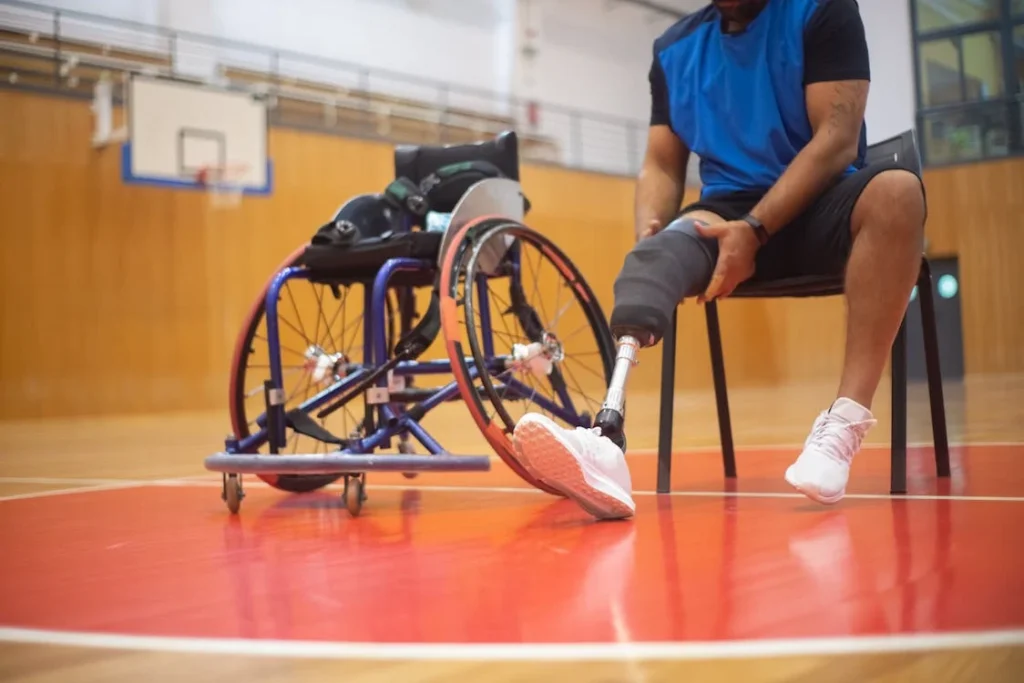
What Is an Ischial Containment Socket?
Now, let’s look at the Ischial Containment (IC) socket. This design takes a completely different approach.
Instead of trying to spread pressure over the entire limb, the IC socket focuses on a very specific support area—the ischium. That’s the lower part of the pelvis, also known as the sitting bone.
In this design, the socket is built high enough to contain the ischium inside the socket itself. This makes the socket act more like a seat, supporting the body’s weight directly from the pelvis.
The idea is to control the position of the femur (the thigh bone) during movement. By stabilising the pelvis inside the socket, the rest of the prosthesis becomes more aligned.
This creates a more stable and efficient walking motion. The IC socket also tends to have a narrow top, which holds the thigh tightly and prevents side-to-side movement.
Unlike the TSB socket, which wraps around the limb evenly, the IC socket grips more tightly in specific areas—particularly around the upper thigh and hip. This can feel more restrictive at first, but many users find that it improves their balance and walking speed once they get used to it.
Real-World Benefits of Ischial Containment
People who are very active or have strong muscle control often prefer the IC socket. It offers more precise control of movement, especially on uneven surfaces or during fast walking. The socket doesn’t rely as much on soft tissues for support, which is helpful for people with bony or irregular limbs.
Another benefit is stability. Because the ischium is “locked” inside the socket, the limb doesn’t wobble during walking. This improves the user’s confidence. It also reduces the effort needed to control the prosthetic knee, making each step feel more natural.
That said, the IC socket does have its challenges. Some users find the high trim lines uncomfortable, especially when sitting or bending. Others feel that the tight grip around the upper thigh limits their motion or causes discomfort over time.
It also requires a very precise fitting process. If the socket isn’t shaped perfectly, it can lead to pressure in the wrong places, causing pain or even skin damage.
This is where experience matters. At Robobionics, we take extra care when fitting IC sockets. We don’t rush. We use test sockets, observe walking patterns, and make sure the fit feels right—not just when standing still, but during real-world movement.
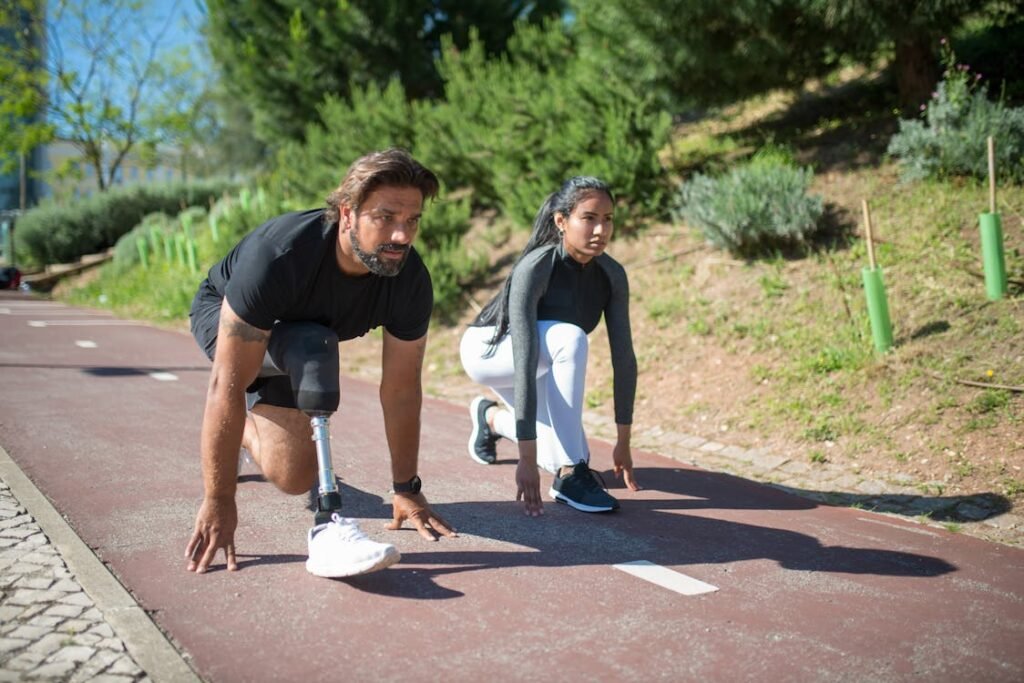
Comparing Total Surface Bearing and Ischial Containment Sockets
Now that we’ve explored what both socket types are, it’s time to understand how they actually differ in use. While both serve the same purpose—connecting the residual limb to the prosthetic—they achieve this in completely different ways.
These differences affect not only how the socket feels, but also how someone walks, moves, and even how their skin responds over time.
Pressure Distribution and Weight Support
The most noticeable difference is where and how the weight of the body is supported. In a Total Surface Bearing (TSB) socket, the goal is to let the entire surface of the residual limb help carry the load.
The socket makes full contact all around, so no single area carries too much weight. This is helpful for users who have evenly shaped limbs with good skin and tissue health. It spreads pressure gently and reduces the risk of pressure sores.
On the other hand, the Ischial Containment (IC) socket shifts much of that weight up toward the pelvis. Instead of asking the soft tissues of the thigh to do all the work, it brings the ischial bone into the socket and allows the bone to share the load.
This approach makes the socket feel more like a solid base. It provides a very controlled, strong platform for walking.
In simpler terms: the TSB socket hugs the whole leg, while the IC socket supports from above and locks the pelvis into place.
Fit and Feeling During Movement
How a socket feels when moving—walking, sitting, or climbing stairs—is another big difference. Users often describe the TSB socket as smooth and even. Because the contact is balanced across the limb, there’s less rubbing or shifting inside the socket.
This makes it comfortable for everyday walking, especially for those who prefer a softer, more cushioned feel.
The IC socket feels tighter and more structured, especially around the top. This grip can seem uncomfortable at first, but it offers more control.
When walking on uneven ground or making sharp turns, users often feel more stable with this type of socket. It locks the limb in place and helps guide the movement of the prosthetic knee more directly.
This means that TSB sockets might be preferred by people looking for comfort, while IC sockets are often chosen by those who want precise control and strong stability.
Impact on Skin and Limb Health
Skin care is a big part of prosthetic use, especially in warmer climates like India’s. A close-fitting socket that traps heat and sweat can lead to skin irritation, rashes, or even wounds.
TSB sockets, because of their total contact and use of liners, can increase warmth inside the socket. That’s why they need proper ventilation, moisture-wicking liners, and good hygiene practices.
The IC socket, while tighter around the upper thigh, may allow for slightly more air circulation lower down. But it can create pressure points where the socket holds the pelvis.
If the socket isn’t fitted correctly, the user may feel discomfort where the ischial bone presses into the socket, especially when sitting.
This is why the fit must be perfect—regardless of the design. At Robobionics, we always check skin health after fitting both types of sockets.
We look for redness, swelling, or marks that last longer than they should. We also help users understand how to clean and care for their skin to avoid long-term issues.
Suspension Systems and Socket Stability
Another important difference lies in how the socket stays attached to the limb—this is called the suspension system. TSB sockets often use suction or vacuum systems.
These systems pull the socket close to the limb, holding it in place without belts or straps. This creates a tight seal, which many users say gives a “connected” feeling. It also reduces the amount of movement inside the socket, which can help with control and comfort.
IC sockets can use suction as well, but many are designed with belt or strap-based suspensions that offer more adjustability.
For users who have volume changes in their limb or who find vacuum systems hard to manage, this can be a better option. However, belts can sometimes feel bulky or restrict movement around the waist.
Choosing between suction and straps is often a matter of personal preference and lifestyle. Some people want the clean, smooth feel of vacuum suspension. Others prefer the security of a strap, even if it means a little more material to wear.
Who Should Choose Which?
There’s no one answer that fits everyone. At Robobionics, we never assume a person will prefer one design over the other until we’ve taken time to understand their body, needs, and goals.
Total Surface Bearing sockets are often a great choice for people who:
- Have a well-shaped, muscular limb without sharp bone ends.
- Prioritise overall comfort and cushioning.
- Are new to prosthetics and want something that feels gentle on the skin.
- Experience pain when pressure is placed only on specific areas.
Ischial Containment sockets are often better for those who:
- Are more physically active and need strong control.
- Want to walk long distances or on rough ground.
- Have experienced instability with other socket types.
- Need greater alignment and support from the pelvis.
These are not hard rules, though. Some users try both types over time and decide which suits them better. Others use one type for daily activities and another for special tasks like sports or hiking.
What matters most is that the socket helps the user move safely, comfortably, and with confidence. No socket should cause pain, limit movement, or make someone feel unsure about their steps.
When the right design is chosen and fitted well, it feels like an extension of the body—not a device to manage.
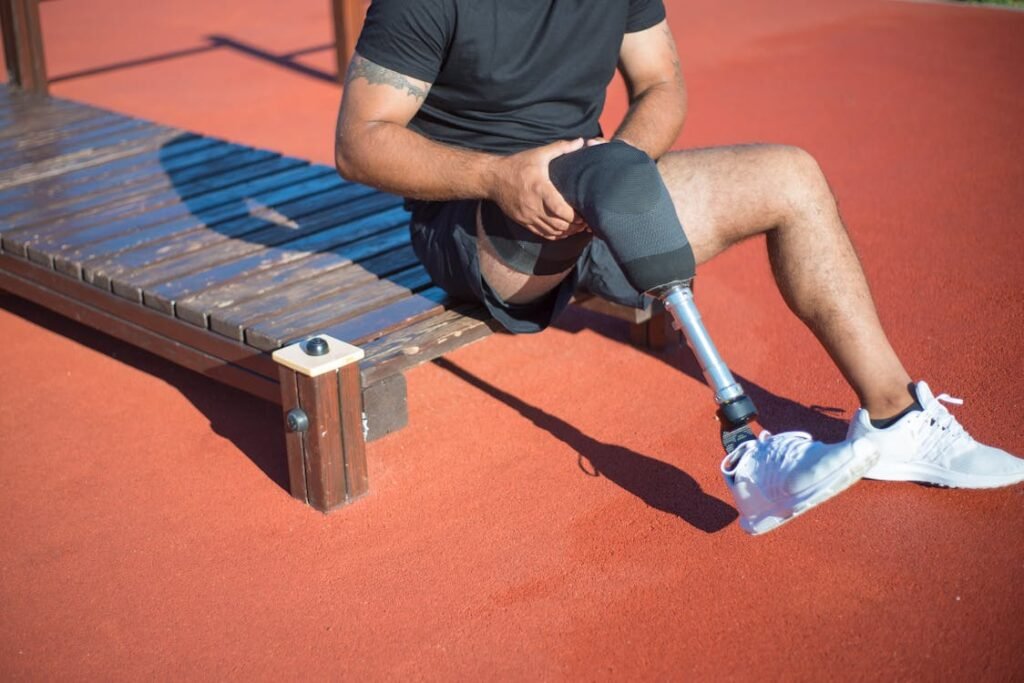
Real-World Feedback: What Users Say About Each Socket Type
While technical features and design philosophies help us understand socket types on paper, the real insights come from those who wear them every single day. At Robobionics, we spend a lot of time listening to our users.
Their feedback is what drives us to keep improving fit, design, and service. Over the years, we’ve seen consistent patterns in how users experience Total Surface Bearing and Ischial Containment sockets—not just in how they function, but in how they feel, adapt, and hold up in real life.
Living with a Total Surface Bearing Socket
Users who choose the TSB socket often say the first thing they notice is how gentle and even the contact feels. Many describe the sensation as “hug-like.”
Because the socket spreads weight across the entire limb, there’s less localized pain, especially for those with soft tissue coverage. This makes it a popular option for new amputees still healing and adjusting to prosthetic use.
One user told us, “With my first socket, all the weight was pressing on one small spot, and I could barely stand. But when I got my TSB, it felt like the pressure disappeared. I could stand longer without needing to sit.”
However, not all feedback is glowing. Some users report that TSB sockets feel too snug, especially on hot days. Moisture buildup can become uncomfortable if the liner doesn’t wick sweat well or if the user is physically active.
Others find the suction system used in TSB sockets difficult to manage, especially older adults or those with reduced hand strength. If the vacuum isn’t sealed properly, it can lead to minor shifting, which over time might irritate the skin.
Another common challenge is volume fluctuation. As the residual limb naturally shrinks or swells throughout the day, the tight fit of a TSB socket may start to feel too loose or too tight.
To solve this, we sometimes use adjustable liners or introduce flexible panels in the socket to give users more breathing room without compromising the snug fit.
The good news is, these challenges are usually easy to fix with small adjustments. When properly managed, most users report a strong sense of connection and comfort with their TSB socket—especially when it’s custom-designed for their limb shape and activity level.
Daily Life with an Ischial Containment Socket
For IC socket users, the experience is a bit different. Most people take longer to adjust, especially if it’s their first time using this design. The high brim and tight hold around the upper thigh can feel restricting at first.
But once they get used to the containment, many users come to love the stability and control the socket provides.
We often hear things like, “It felt tight for the first week, but once I broke it in, I never looked back. I can walk on slopes, steps, and gravel without feeling like I’ll fall.”
One of the major benefits of the IC socket is the ability to maintain proper alignment. By stabilising the pelvis, the IC socket keeps the femur from shifting inside the socket during motion.
This makes every step more controlled, and in many cases, smoother. Users say this gives them the confidence to walk faster, turn quickly, or move without second-guessing each step.
However, there are drawbacks too. For people who sit for long periods, the high brim around the pelvis can become uncomfortable, especially without proper padding.
And because the socket holds the ischium tightly, any error in design or alignment can lead to pressure points that become painful quickly. That’s why we always test IC sockets thoroughly before finalising them.
Another user told us, “The control is amazing, but if it’s even a little off, I can feel it right in my lower back. So I come in for regular check-ups just to make sure it stays aligned.”
This highlights an important point: IC sockets demand a very precise fit. They are not as forgiving as TSB sockets when it comes to small changes in limb shape or posture. But when they’re dialed in correctly, they deliver unmatched control.
Choosing Based on Lifestyle
One of the best ways to decide between the two designs is by looking at daily activity.
People who are on their feet all day—teachers, shopkeepers, delivery personnel, farmers—often prefer the extra control of the IC socket. They feel more secure during long walks or when navigating rough ground.
Those who live a more flexible routine—office workers, older adults, or people who value softness over control—tend to lean toward the comfort of the TSB socket. They like the gentle feel and the ease of putting it on and taking it off.
That said, there are no strict rules. We’ve seen younger users with high energy levels prefer TSB for its comfort, and we’ve seen retirees use IC sockets simply because they feel steadier with them.
The most important factor is how the socket feels to the person wearing it, and how it holds up during their normal day.
The Role of Reassessment
Over time, what works today might not work tomorrow. The body changes. Activity levels shift. Health conditions evolve. That’s why we always encourage reassessment after a few months of use. If a socket no longer feels right, it’s not a failure—it’s an opportunity to improve.
We’ve had users who started with TSB sockets and later moved to IC when they became more active. We’ve had others who started with IC and later chose TSB for more comfort in retirement. Switching is normal, and it’s a sign that the user is tuned in to their body’s needs.
At Robobionics, we consider each socket not as a final solution, but as a chapter in a person’s prosthetic journey. And each chapter needs to reflect who they are, what they do, and how they live.
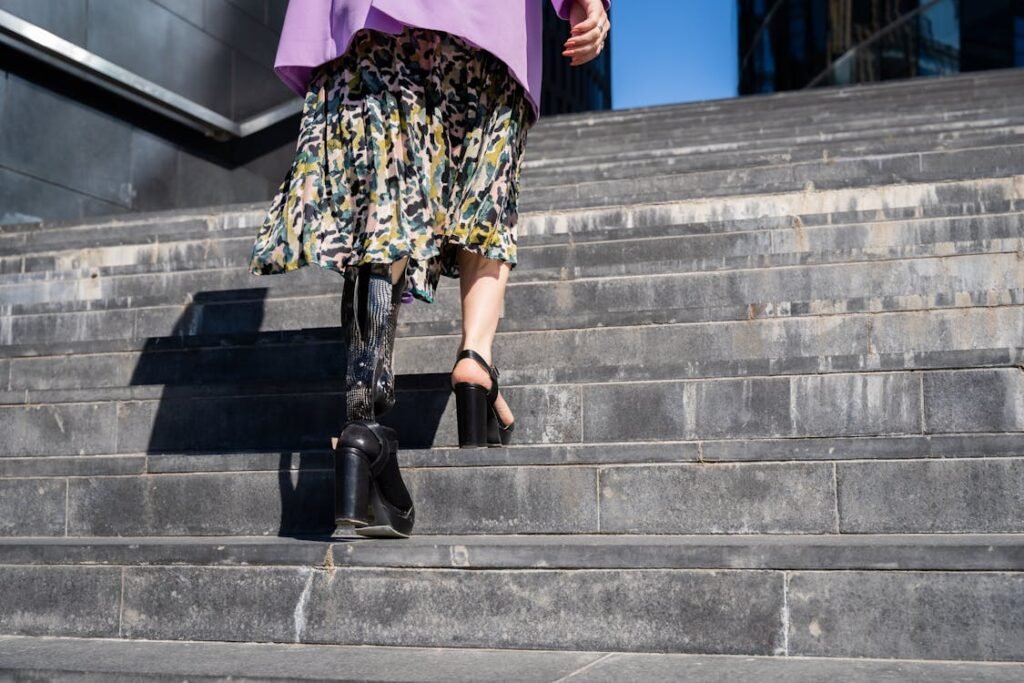
The Emotional Side of Socket Fit: Confidence, Identity, and Daily Life
When we talk about prosthetics, most conversations focus on movement, comfort, or skin health. But there’s another side that’s just as important—and often overlooked.
That is the emotional experience of wearing a prosthetic limb. For many users, the type of socket they wear does more than support their body. It affects their self-esteem, their confidence in public, and even how they see themselves in the mirror.
At Robobionics, we’ve come to realise that socket fit isn’t just a technical issue—it’s a deeply personal one. And different socket designs can lead to different emotional responses.
How Fit Affects Confidence
Imagine walking into a room full of people, knowing your limb might shift inside the socket at any moment. Maybe the socket has a bit of extra movement, or maybe it makes a faint noise when you take a step.
Small issues like these often don’t seem major to others—but to the person wearing the prosthesis, they can be devastating.
This is something we hear from users of poorly fitted Total Surface Bearing sockets when the vacuum seal isn’t working right. They feel nervous about the limb slipping or making sound.
That nervousness shows in how they walk. Their steps become shorter, more cautious. Their shoulders tighten. In time, it affects how they feel about going out at all.
On the other hand, users with well-fitted Ischial Containment sockets often report a very different kind of feeling. They say things like, “I feel locked in. I know this leg won’t go anywhere.” That sense of control builds confidence—especially in challenging environments like crowded streets or uneven terrain.
But again, it depends on the person. Some people don’t like the feeling of tightness around the pelvis. It makes them self-conscious, especially when sitting down or wearing fitted clothing.
For these users, even a well-designed IC socket might make them feel restricted, both physically and socially.
This is where emotional fit becomes just as important as mechanical fit.
Body Image and Socket Design
For above-knee amputees, the socket can change how their lower body looks. Some socket shapes are bulkier, especially around the upper thigh. Some show more under clothing. This matters.
Many users, especially younger adults or women, tell us they want their prosthetic to feel “invisible”—something that supports them but doesn’t draw attention.
In that case, Total Surface Bearing sockets can often be shaped with a smoother contour. They tend to look more natural under trousers or dresses, which helps users feel more like themselves.
Others, especially those who are very active, say appearance doesn’t matter as much as stability. They’re willing to accept a more noticeable IC socket if it lets them run, climb, or move with confidence.
There’s no right or wrong here. What matters is the conversation. We ask each user not just how they move, but how they want to feel.
Whether they’re dressing up for a wedding, attending college, or just walking to the market, their emotional comfort matters as much as the socket’s structural integrity.
The Role of Trust
When a socket fits well, something quiet but powerful happens: the user stops thinking about it. They walk into a room, or go to work, or sit for chai with friends—and for those moments, the prosthetic disappears into the background. That peace of mind is priceless.
We’ve seen this happen often with TSB sockets that are well-fitted and used with a good suction system. Once the initial learning curve is past, many users say it “just becomes part of me.” There’s no fear of slipping, no second-guessing, no soreness that lingers into the evening.
With IC sockets, trust is built more through stability and performance. Users who value athletic movement, or who often walk on rough ground, tell us they trust their IC sockets more because they hold firm under pressure.
That trust translates into bolder movement, longer walks, and more active lifestyles.
But here’s the key—trust takes time. And it only develops when the socket works with the user, not against them.
Reducing Mental Fatigue
Poor socket fit doesn’t just affect the body. It also wears down the mind.
When every step causes discomfort, or every movement has to be carefully planned, the user becomes mentally tired. They spend energy managing pain, avoiding stairs, or figuring out how to sit comfortably in a chair. Over time, this mental fatigue builds into frustration or even avoidance.
A good socket removes that mental burden. It gives users back the brain space to focus on other things—work, family, hobbies, conversations. It reduces stress, improves mood, and often makes people more social and more engaged.
This might sound like a small benefit, but it’s not. It’s life-changing.
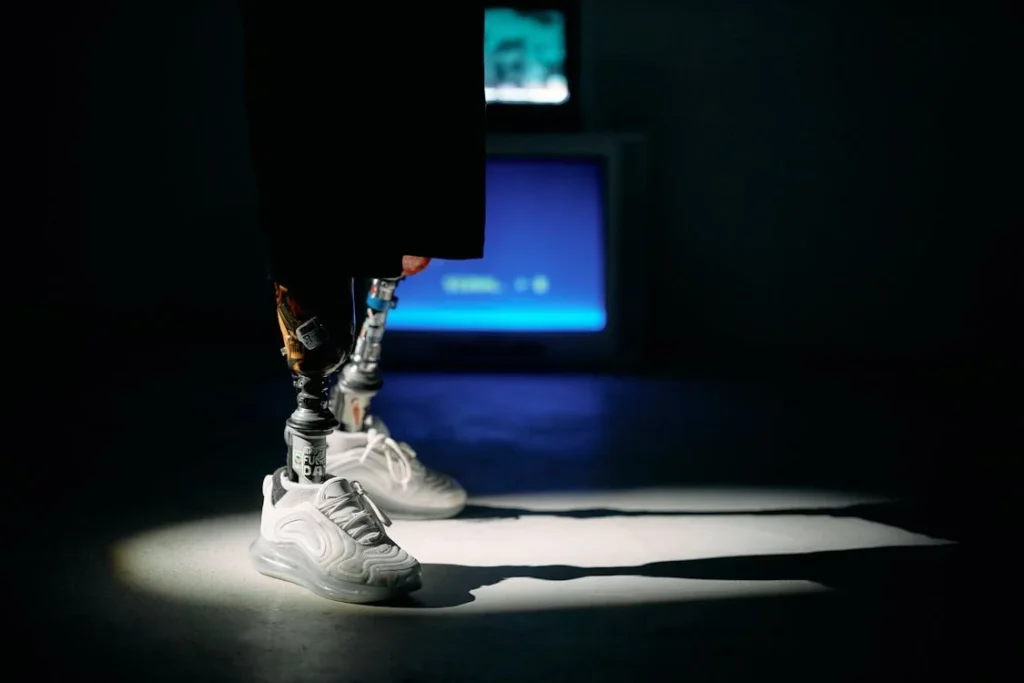
Looking Ahead: Customisation, Follow-Up, and the Future of Socket Design
Socket technology has come a long way, but at Robobionics, we believe the future isn’t just about smarter materials or faster production. It’s about better understanding people—their movement, their habits, their pain, and their aspirations.
Both Total Surface Bearing and Ischial Containment sockets are excellent designs. But neither is perfect for everyone. That’s why the future lies in customisation. It lies in taking the strengths of each design and shaping them to the specific needs of each individual.
This isn’t something off-the-shelf products can deliver. It takes time. It takes listening. And it takes a commitment to making prosthetics more personal than ever before.
Our goal is simple: to help people forget they’re even wearing a prosthetic.
To achieve that, we don’t just stop at the first fit. We believe in follow-up care, in regular check-ins, and in offering adjustments when the user’s body or lifestyle changes. We treat sockets like living solutions that evolve as the person evolves.
We also believe in educating the user. Knowing how your socket should feel, what warning signs to look for, and how to care for your skin can prevent long-term problems and help you stay active longer.
As we move forward, we’re excited about newer materials, smarter suspension systems, and more intuitive digital scanning that will make socket fittings faster, more precise, and more adaptive.
But above all, we’re excited about working side by side with the people who wear them—because that’s where the real progress happens.
Conclusion
Choosing between a Total Surface Bearing and an Ischial Containment socket isn’t just about technical differences. It’s about how you live, how you move, and how you want to feel each day.
If you’re looking for comfort, an even distribution of pressure, and a soft, all-around fit, the TSB socket might be your perfect match. If you want firm control, enhanced stability, and precise alignment during movement, the IC socket might serve you better.
But you don’t have to make that choice alone.
At Robobionics, we’re here to help you figure out what’s right for your body, your life, and your future. Whether you’re taking your first steps with a new prosthesis or searching for a better fit after years of discomfort, we’re ready to build something that works—not just technically, but personally.
Because the right socket doesn’t just carry your weight. It carries your confidence, your comfort, and your freedom.
And when the socket is right, life feels right too.



